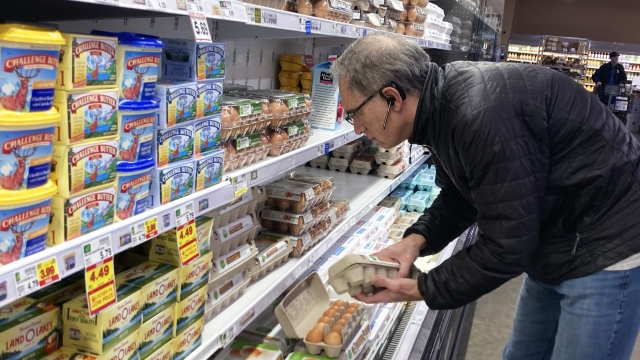Some consumers are feeling the pinch when they go grocery shopping.
"The anxiety is about 10. It's 10. It's a struggle out here," said Roxie Meyers, a new mom.
With the average grocery costs up 10.2% compared to last year, shoppers are finding the basics costing more, thanks to inflation.
Take the cost of a gallon of milk.
In 2020, it was $3.20. This year it’s a dollar more – at $4.20, a 31% increase. Bread jumped 22%, now costing $1.90. In Cincinnati, this shopper now limits the amount of cereal she buys.
"It's expensive. If you have several children, and the kids don't all eat the same cereal, you're really having a hard time," said shopper Kate Swearengin.
Aside from rising food costs, shoppers who rely on pandemic-related emergency food stamps or snap benefits will now have less to spend on food. 32 states and Washington, D.C. ended the program last month.
"I just now gotta pick and choose you know it's going to be a lot of days where I ain't going to be able to eat the things that I want. But you know I'll make due the best I can," shopper Leon Purnell said.
The average recipient will receive $90 less a month. New mom Roxie Meyers is worried about how she’s going to feed her family of six.
SEE MORE: Easter to be impacted by price inflation and shortages
"Hopefully it doesn't mean okay I've gotta skip a meal because I've skipped meals before because my kids, they eat first," Meyers said.
As families stretch that dollar, some grocery stores have taken notice. Tina Manten orders inventory for a local Ohio grocery store.
"The prices have gone up a lot. So we try to bring in as much of the store brand types as we can," Manten said.
"I walk through the other stores and I'm asking myself every time I go in there 'how can everyday regular Americans afford prices like these?'" said Phillip Francis, the store manager at ESH's Discount Groceries.
Others turn to salvage grocery stores, where prices can be 50% less because products there have torn packaging or have food that’s close to the expiration date.
And some grocery prices have gotten so high, some shoppers are turning to buy now pay later programs like Zip — where you could use payment installment at retailers like Walmart, Costco, and Target.
"For your consumables, it's not going to be helpful. Today it might seem like a good idea, but in two weeks when you have to buy groceries again and you're making that buy now, pay later payment from two weeks prior, it's going to be very, very painful," said William Chittenden, an associate professor of finance at Texas State.
And food banks and other food programs around the country, like The Nashville Food Project, have seen more requests for food.
"We get calls every day, even though we're not a food bank, people do call us for food and of course we don't turn anybody away," said C.J. Sentell, CEO of The Nashville Food Project.
Trending stories at Scrippsnews.com



